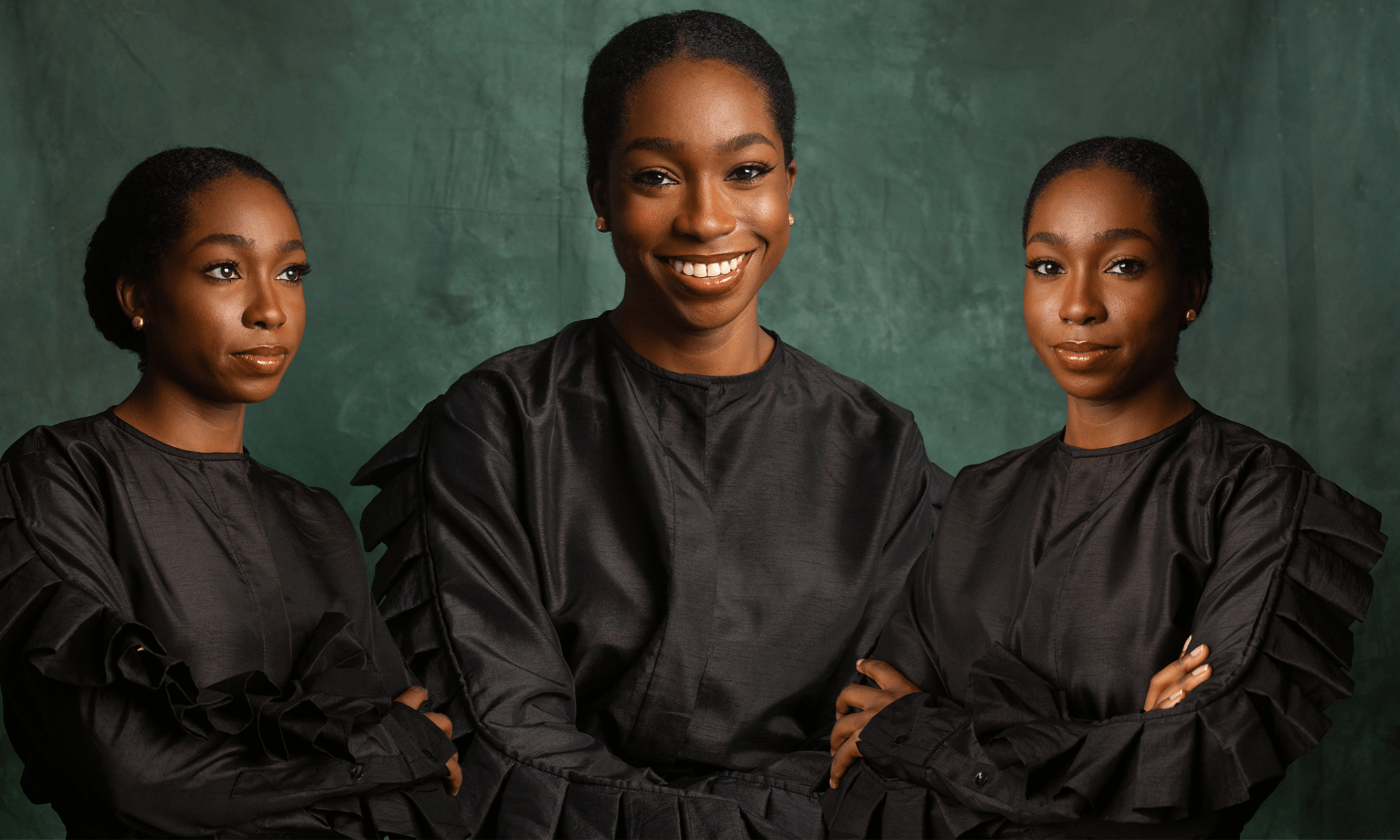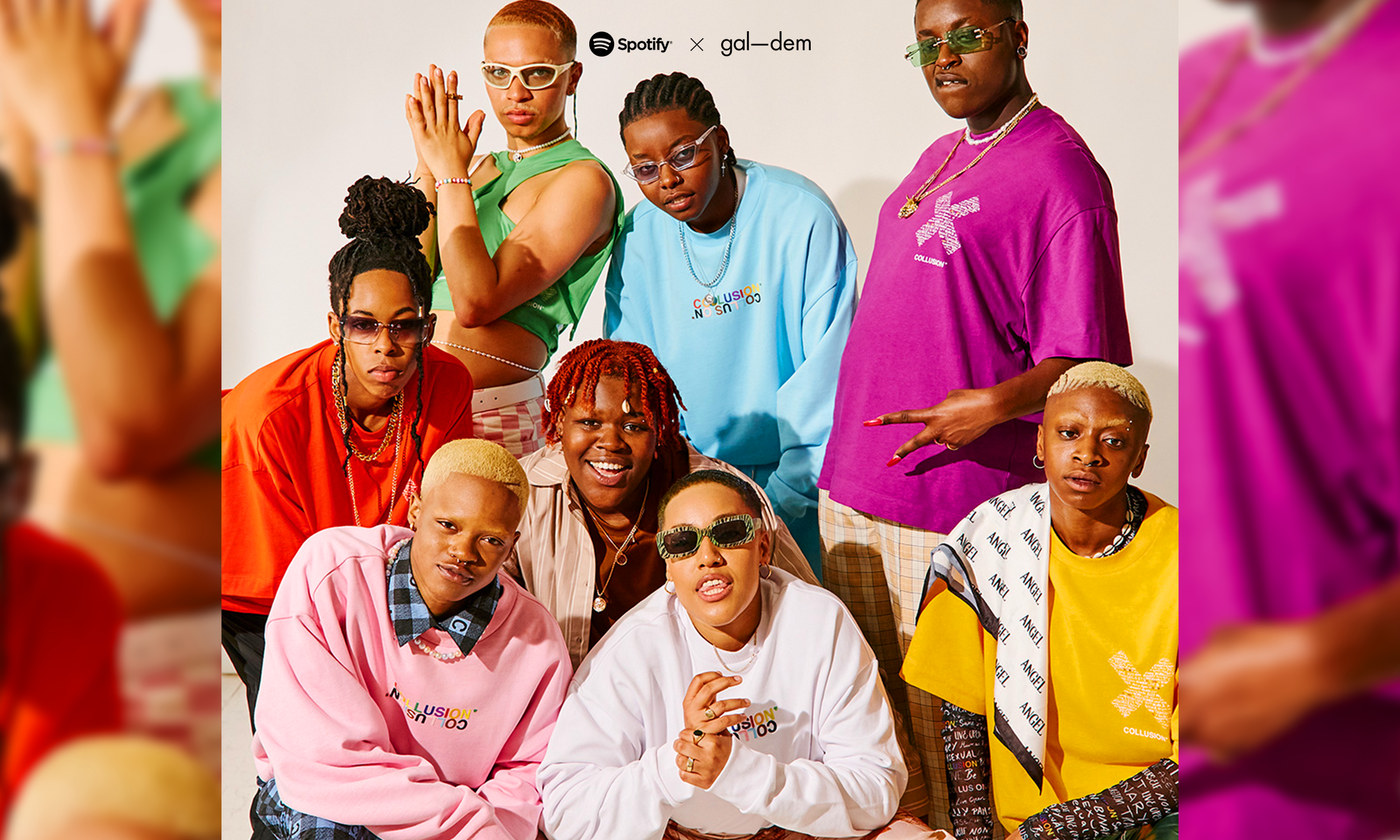Meet the on-the-rise designers we won’t get to see at LFW
For Instagram’s first-ever Insta Fashion Fringe, gal-dem has teamed up with three up-and-coming designers to celebrate their work.
Kemi Alemoru and Niellah Arboine
23 Feb 2021

Images courtesy of Labadi Studios, Deborah Odubanjo, Leeann Huang
Produced in partnership with Instagram
London Fashion Week takes place between 19 and 23 February this year. While the five-day event is already one of the biggest dates in any fashion calendar, LFW is often dedicated to the bigger, more established names presenting. So, we thought it was time to shine a light on the young DIY designers making a name for themselves in the world of fashion.
For Instagram’s first-ever Insta Fashion Fringe, gal-dem has teamed up with three up-and-coming designers to celebrate their work and hear about their creative processes and inspirations.
We caught up with Yvonne Gyamf, founder of the form fitting, made-to-order womenswear Labadi Studios, Deborah Odubanjo, whose work is inspired by fun culture clashes and rebellious souls, and Leeann Huang whose flamboyant designs incorporate recycled plastics and holographic prints.
Read on to discover how the trio is using Instagram to showcase their work and build creative communities.
Labadi Studios
“I just wanted to make clothes that were fun,” says Yvonne Gyamfi, the London-based designer behind the fashion label Labadi Studios. Named after the popular beach in Accra, Ghana, the fledgling made-to-order womenswear brand is “focused on the way clothes fit people”.
Fun and flirty comes to mind when you look at Labadi Studios designs. The most popular items are probably the bright, silhouette-focussed two-pieces. They come in shades like hot fuschias or zebra print and consist of button-up crop tops, with asymmetrical lines on the barely-there skirts to match. Although only launched in September 2020 you can find Labadi Studios worn by the likes of model Aweng Chuol.
“By mainstream standards, I have no business starting up a fashion label,” Yvonne jokes, admitting she didn’t study fashion but did take textiles up until A-level. But social media sites like Instagram have allowed for a more accessible level playing field. It’s no longer totally about who you know, but simply the work you do. “There wouldn’t be Labadi Studios without social media really,” she says. “I feel like Instagram helps foster a more personal connection, especially for people who are running small businesses and brands.” Whether it’s using polls for market research or taking advantage of the affordable promotions the app has to offer. “You’re able to speak directly to an audience.”
The future is looking bright for Labadi Studios. “Growth, growth, growth,” Yvonne says of her future plans. As for her ultimate aim for Labadi Studios? The message is simple. “At the end of the day, I want people to wear the clothes and feel good.”
Deborah Odubanjo
Deborah Odubanjo is fascinated by culture clashes. Her label is inspired by the vibrant outcome that occurs when two worlds collide, a natural pre-occupation given that her family moved back to the UK from Nigeria in the 1980s. “My dad wore such a clash of colours and fabric. When Africans come here there’s cultural elements that mix together naturally,” she explains.
She’s taken care that her wares embrace the subtlety with which these sartorial cocktails actually present themselves IRL, believing that African collections sometimes lean towards “very obvious” visual markers. As fabulous as Kente and Ankara prints are, the influences from the continent in her work can be seen through things like choice of fabrics, tailoring and are, therefore, “a bit more conceptual”.
Deborah makes clothes for the “rebellious” type. She imagines Grace Jones wearing her citrus orange tailored suit with shoulder pads and trousers with a dramatic skirt silhouette billowing from the waistline. She’s also inspired by artists like Jean-Michel Basquiat; she incorporates the scribble elements from his artwork and applies them to her powerful, sculptural jackets as well as her asymmetrical shirts (“It’s quite careless, abrupt and crazy”). Elsewhere, Deborah looks to other designers like Richard Malone to get a sense of how to make that feeling of contrast bleed into all of her design decisions. Malone similarly uses bold structures but delicate fabrics.
Now she’s completed her final project for the University for the Creative Arts, Deborah is using her Instagram feed to platform her brand and connect with other creatives. “The majority of my opportunities have come through Instagram so far, connecting with stylists, photographers and other designers,” she says of her presence on the site. “It’s made a big impact.” In 2021, Deborah’s eyes are firmly on the prize; to keep pushing herself creatively and embrace “craziness”.
Leeann Huang
Fashion is at its best when it’s playful and in Leeann Huang’s technicolour universe the more cartoonish, the better. “I really want my clothes to inspire that sense of childhood, a pure sense of joy,” the 26-year-old tells gal-dem. Leeann’s inspiration is the feeling of hope and optimism we have as children that stands in stark contrast to our current “dreary” outlook.
Looking at the bright and bold designs, you get a real sense of the fun Leeann had as she reinvented the plastic bag, via recycled materials moulded into padlock-like shapes, or her interpolation of the fur hat trend. Hand-feathered and gargantuan in design, the hats frame the wearer’s face with a showstopping halo of comforting soft fluff and were created in collaboration with self-described “silly crown designer”, Benny Andallo. It caught the attention of Elle magazine in September. On the cover, one of Leeann’s pink fluffy hat is the textured neon background while the bright smile of in-demand model Adwoa Aboah brightens the cover.
The London-based, California-born designer’s brand aesthetic is both once retro and focused on modernity. “I loved [TV shows like] the Powerpuff Girls and Totally Spies,” she recalls. “There’s such a camp sense of humour.” Present Leeann uses her designs to playout her childhood self’s vision of the world, inspired by the cartoons she consumed. “In The Jetsons, we were promised a crazy amazing utopian future where everyone’s driving bubble cars but everything just seems to get worse,” she says. “I wanted to translate that feeling into a garment, the nostalgic view of the future.”
Leeann reveals that she doesn’t see herself pursuing the “traditional route” of fashion. She wants to take the time to nurture a following via her Instagram, using the platform as a portfolio and is seeking counsel from like-minded designers like 69. One of Leeann’s future goals is to build a sustainable brand with ethical manufacturing processes. And despite the fact she only just graduated from Central Saint Martins, there is palpable excitement to see where Leeann is going next; as well as Elle, her creations have popped up in fashion editorials for Crack and Bricks magazine and she’s been featured by The Face.






